Archive for October, 2015
Doctors Said He Was “Incompatible With Life” But He Just Turned Two and Said “Mommy”
http://www.lifenews.com/2015/10/28/doctors-said-he-was-incompatible-with-life-but-he-just-turned-two-and-said-mommy/
With all of the depressing news about abortion and the shocking things the Planned Parenthood abortion business does to sell aborted babies and their body parts, there’s a palpable need for good news that is uplifting.
Today, a British newspaper is reporting on a little boy who doctors said was “incompatible with life.” Because his courageous mother didn’t give up on him when doctors said he would die immediately after birth, little Aaron just turned two and said “Mommy” for the first time.
When she was pregnant, 24-year-old Emma Murray heard from doctors about her son’s condition. Aaron was diagnosed with rare health disorder called holoprosencephaly and he was born with a brain stem so can move and breathe but not a full brain. Physicians told Murrary Aaron could die in minutes and helped arrange a baptism for him.
Now, two years later, Aaron has amazed doctors – and has spoken his first word. Aaron is not only alive but enjoys giggling and clapping his hands with his big brother, Jack, aged three.
As the London Daily Mail reports:
Emma said: ‘When Aaron was first born, I was told there was no way he could survive. I was told he might live for three minutes, three hours or three days.
‘The doctors told me if it had been any of his other organs which had failed to grow, they would have been able to do something but they couldn’t grow him another brain.
‘But right from the very beginning, Aaron proved he is a real fighter.
‘And I was saying “mummy” to him recently and clapping my hands and he was giggling away.
‘He looked at me, and said “mummy”. I couldn’t believe it. I’d been told my son would only live for a few minutes, but now here he was saying ‘mummy’ which is something I never thought I would ever hear.’
That good news is a stark contrast to what happened after he was born.
Emma said: ‘I was absolutely heartbroken. He was hooked up to every machine and had a hat over his head so we couldn’t see the size of it. I just sat by his cot rubbing his little hand. I was in total shock.
‘Everything had happened so fast – I didn’t even know I was pregnant, I’d given birth and been told my baby was going to die all in the same 24 hours.’
Hospital staff helped Emma organise a baptism for her son, but within hours, Aaron’s condition started to improve and they realised he could even breathe unaided.
Emma said: ‘For the first few days of Aaron’s life, it felt like everyone was just waiting for something bad to happen but Aaron had other ideas.
Thankfully, Emma and her little boy are moving forward and focusing on embracing life a day at a time.
She said: ‘Some days, we take one step forward and two steps back – but since he turned one, we have been taking more steps forward than back.’
And the most emotional moment came just six weeks ago when Aaron amazed Emma by saying ‘mummy’ for the first time.
She said: ‘I was just playing with him in my front room. He was lying on his back on the carpet and I was leaning over him clapping my hands, and saying “mummy” to him over and over, really drawing out the sounds.
‘He was giggling, and then he said “mummy”. He had literally copied what I was saying. I just stared at him in shock, and then I just burst into tears. It was such an emotional moment.
The Government is Paying for 10 Year Olds to Get Implanted Birth Control?!?!
http://www.patheos.com/blogs/bristolpalin/2015/10/the-government-is-paying-for-10-year-olds-to-get-implanted-birth-control/
Do you remember what it was like to be a 10 year old? I remember being an unabashed tomboy concerned with playing outside and acing 5th grade.
But life isn’t so innocent and carefree for some 10 years old in Washington State. This summer a report came out claiming that some schools in Washington were giving free birth control implants to children as young as 10 years old! These birth control devices are implanted in a girl’s uterus, and all of this can be done without a parent’s consent!
And now a public records request by Judicial Watch has confirmed the details of what is happening in Washington.
JW filed a public records request with the Washington Health Care Authority after reading a disturbing article in a pro-life news site over the summer about a Seattle high school that offers different forms of birth control without parental knowledge or consent. This includes implanting an intrauterine device (IUD) in a girl’s uterus free of cost. It’s part of an initiative offered by Medicaid, the joint federal and state insurance program for the poor. The article points out the irony that a teen in Seattle can’t get a sugary soft drink in high school but can have a device implanted into her uterus.
The data obtained by JW reflect increasing numbers of kids in all age groups receiving these birth control implants from 2013 to 2014. Figures can’t be compared for 2015 because the full year’s data is not yet available, but the records show that in 2014 and at least part of 2015, girls as young as 10 received the implants. The largest group of minors that got the birth control implants was 17 years old, according to the data, but girls much younger also received them. Four 11-year-olds got birth control from the state during the 2 ½- year period and so did more than 100 girls between the ages of 12 and 13. The numbers go up as the girls get older with 364 girls age 14 getting the implants and 744 15-year-olds. The records show that 2,336 girls ages 16 to 17 were given implants during this period.
It is crazy that the government is offering a controversial form of birth control that can have serious life-long side effects to 10-year-old CHILDREN, but then to do all of this behind a parent’s back is simply outrageous!
Why CMP Undercover Journalist David Daleiden Saw the Face of Evil in a Late-term Abortionist
By Cheryl Sullenger, Operation Rescue, October 16, 2015
David Daleiden is the Director of the Center for Medical Progress, an organization that was known only to a handful of people prior to July 14, 2015, when he released the first of 10 summary videos that were part of his jaw-dropping 30-month undercover investigation into Planned Parenthood’s participation in the illegal sale of aborted baby body parts that has dramatically changed the abortion debate in America.
Recently, David was interviewed on camera by The Blaze’s Glenn Beck, who posted a fascinating clip from that interview. In that clip, Beck asks David about whether he ever realized the powerful evil that with which he had embedded himself.
“At some point, you guys had to have walked out of those [meetings] just shaking and thinking, A: ‘I can’t believe the evil I just faced,’ and B: people die for stuff like this. I mean, we’re going up against evil, and very powerful evil. Did that ever hit you while you were doing these things?”
David then related his encounter with late-term abortionist Shelley Sella, an abortionist conducting the latest of abortions throughout all nine months of pregnancy who currently works at Southwestern Women’s Options in Albuquerque, New Mexico. At the time of David’s encounter with her, she was a contract abortion provider with Planned Parenthood in Concord, California.
David described a meeting where he was laughing and joking with Sella after a showing of the independent film, “After Tiller.” But for a moment, their eyes locked, and he saw a change come over her.
“All of a sudden, her eyes looked really hard and mean and aggressive, and for the first time during this entire project, I felt really afraid – like an actual fear — fight or flight kind of response,” David related. “I felt very exposed, felt like she knew everything about me.”
But then her face changed again and she was back to laughing and joking with him.
“I talked to several people about that afterwards, and some people have kind of a spiritual interpretation of that event and there’s a more subtle interpretation. But on some level, we feel like that was the predator — the predator look or the predator instinct that you see in someone who is accustomed to killing people. This is a late-term abortion doctor who has terminated many, many, many big babies over the years,” Daleiden told Glenn Beck, who sat enthralled by the power of the moment.
Spiritual battle
I completely understood. For me, it was a real “Lord of the Rings” moment. I could imagine David as J.R.R. Tolkien’s Frodo laid bare before the all-searching Eye, with only the thinnest of veils keeping him from being discovered by the wicked Sauron, who was bent on the destruction of man-kind.
My faith informs me that there is a spiritual battle that interacts with our realm of reality, where angels and demons continuously fight for supremacy until the Final Day. Had David caught a glimpse of a demonic force that somehow sensed something about him for a brief moment in a similar way that Tolkien’s Ring Wraiths sensed the presence of Frodo, the Ring Bearer?
I am very familiar with this particular abortionist since she was one of three that were employed by the infamous George Tiller at his late-term abortion mill in Wichita, Kansas, who has aborted hundreds, if not thousands, of babies in the late second and third trimesters of pregnancy.
While my relationship with Sella has been more adversarial than David’s over the years, I have felt that same sense of evil, especially one day in June, 2008, when a licensed practical nurse walked into our office and unburdened her heart about her experiences working at Tiller’s abortion clinic. A story she related to us about Sella was one of those surreal moments when the evil hits home.
35-week born alive baby
Tina David was a slender older woman with short-cropped blonde hair who had worked assisting Tiller’s abortionists with the very late-term abortions for which he was so famous. But the work tormented her. She found it difficult to sleep at night. She began losing a dangerous amount of weight and ground her teeth down to the point that she required extensive dental work to correct.
Tina and I sat down in Troy Newman’s office with a digital audio recorder running. As Troy began to question her, Tina began to open up.
One day, she said, she was assisting Sella with the abortion of a 35-week baby.
“Well, my job was to hold the [woman’s] leg and count the parts, if it was in pieces,” she said. “And this was, um, maybe 35 weeks?”
“That’s a pretty big baby!” I responded.
“It was a big baby,” she affirmed. “And the baby came out and it was moving. I don’t know if it was alive or if it was nerves? I have no clue. But Dr. Sella looked up right away at me and took a utensil and stabbed it right here and twisted. And then it didn’t move anymore.”
Tina pointed to her right-side, just under the rib cage to show where there baby was stabbed.
It’s shocking to hear someone describing a murder. It’s almost like you can’t believe what you are hearing and it takes a few moments for the reality to sink in. There was no reason to doubt her story. We were also able to verify other information she gave us, giving her account of this baby’s death even more credibility.
When a 35-week baby comes out moving, that isn’t an abortion. It’s a live birth. I consulted an attorney friend of mine in California, and was advised that Troy and I had an obligation to report the matter to local law enforcement.
We turned over the raw, unedited audio file to the police. Detectives with the Wichita Police Department immediately picked up Tina and questioned her.
As much as David Daleiden reminded me of the Ring bearer, Frodo, Tina reminded me of another Tolkien character, a creature with a double-personality who was nearly consumed by darkness as Gollum, but in which there remained a nagging shred of conscience that manifested infrequently as Smeagol.
It was her “Smeagol” persona who shared with us in Troy’s office, but it was the “Gollum” part of her that was interviewed by police. Tina squirmed under questioning and recanted her ever-changing story, telling police she didn’t want to get involved. She sought to save herself from any implication in that cold-blooded murder.
There wasn’t much the police could do. Tina was an unreliable witness. The physical evidence held in the remains of the nearly full-term murder victim had been destroyed in the industrial crematorium that Tiller had installed in his clinic many years before.
Still unaccountable
I have often thought that if Pennsylvania’s late-term abortionist, Kermit Gosnell, who was convicted of first degree murder for stabbing babies born alive at his “House of Horrors” abortion mill, had owned such an incinerator, he would still be on his serial-killing spree today. It was the bodies of his victims that testified against him every bit as much as the witnesses that took the stand.
Unfortunately, Sella was never held accountable. Just months after the stabbing incident, Sella cancelled her Kansas medical license and relocated her late-term abortion practice to Albuquerque, New Mexico, where there are no laws to restrict abortion even until the day of a baby’s expected birth.
I continued to work with pro-life activists Tara and Bud Shaver, who once served as interns at our Wichita headquarters. Tara had obtained a number of 911 calls originating from Southwest Women’s Options.
One stood about above the others.
On May 12, 2011, a 911 call was placed by an employee of Southwest Women’s Options seeking emergency transport for a late-term abortion patient.
“The doctor’s concerned that we have a uterine rupture during a late-term abortion procedure. A patient with a previous C-Section. The patient’s stable at the moment, but. . .” the caller’s voice trailed off.
Documents revealed that Sella had indeed ruptured the uterus of a 26-year old patient who was 35 weeks pregnant – the same age of gestation as the baby that Sella stabbed in Wichita five years earlier — and that the clinic was ill-equipped to handle the life-threatening medical emergencies that can and do take place during risky late-term abortions.
Tara and I both filed complaints against Sella with the New Mexico Medical Board, which initially charged her with four counts of gross negligence. Medical boards rarely bring such charges if they are not positive they can prove the malfeasance. I had though we finally had Sella. She may have gotten away with that baby’s murder in Wichita, but she would not get away this time.
But unfortunately, the New Mexico Medical Board voted to absolve Sella, buying her specious argument that obstetrical standards of patient care should not be applied to late-term abortions, and that a much lower standard should be acceptable.
Today, Sella continues to conduct the latest of abortions in Albuquerque and has become famous as one of the most experienced late-term abortionists in America. According to a consent form obtained by the Shavers, the remains of babies aborted at Southwestern Women’s Options, are automatically used in research. Since the “consent” for research is buried in the same consent form for the abortion, it is doubtful many women even realize their babies are being turned into fodder for laboratory experimentation.
Changing times
Now, thanks to David Daleiden’s brave undercover journalistic study, a new day has dawned in American’s abortion wars where the public is finally confronted with the evil of child-killing in a way that has never been done before – in a way that could finally, eventually, lead to an end of the evil of abortion.
As Gandalf, another of Tolkien’s amazing characters, once said, “Dawn is ever the hope of man.”
Ignoring a Breast Cancer Link
The month of October is Breast Cancer Awareness Month. This is an annual campaign that began in 1991 to raise awareness about this disease. Although the campaign promotes regular self-breast exams, doctor visits, annual mammograms, and provides data on recurrence, preventable risk factors for breast cancer are not emphasized.
What are the risk factors for breast cancer?
According to the National Cancer Institute, the risk factors for breast cancer include: older age, genetic abnormalities, hormonal therapy, radiation therapy to the chest, alcohol and obesity. Although it has been demonstrated that hormonal contraceptive use increases breast cancer risk, this risk factor is virtually ignored during the campaign.
Synthetic estrogen was classified by the World Health Organization in 2005 as “Group 1 carcinogen”. Hormonal contraceptives contain synthetic estrogen and increase the risk of not only breast cancer, but also liver and cervical cancer. According to a meta-analysis published in the Mayo Clinic journal, women who have used hormonal contraceptives for four years before first full-term pregnancy, have an increase of 52% in breast cancer risk.
Another study funded by the National Institutes of Health found that the use of oral contraceptives for one year or more was associated with a 4.2-fold increased risk of triple-negative breast cancer for women 40 and under.
Another preventable risk factor that is not mentioned in the breast cancer awareness campaign is that due to induced abortion. Recent studies published in India and Bangladesh; report that induced abortion increases the risk of breast cancer 6-20 times in these populations. Although 53 studies (out of 73 worldwide) confirm the association between breast cancer and induced abortion, medical and government organizations continue to claim otherwise.
It is known that induced abortion in the first trimester of pregnancy alters the maturation of cells in the breast, which may trigger the development of cancer cells. Full term birth and lactation, mature breast cells and help to protect women from breast cancer.
How common is the problem of Breast Cancer?
Breast cancer is the most common cancer in women worldwide. In the U.S, 1 in 8 women have the chance of developing this cancer. According to statistics reported by the CDC, 211,731 women were diagnosed with breast cancer in the United States during 2011. Of those women 40,676 women died from this cancer resulting in one death for every five cases diagnosed. In some countries, this cancer survival ratio is lower. For example in India, 115,000 new cases of breast cancer were reported along with 53,000 deaths from this cause in 2008. In this case, there was one death for two newly-diagnosed cases.
Can breast cancer be prevented?
There are some breast cancer risk factors that you cannot modify such as age, being a female and the genetic predisposition. Some lifestyle changes could reduce the breast cancer risk. Regular exercise, healthy diet, and avoiding smoking, alcohol consumption, and radiation therapy on the chest may reduce the risk of the disease.
Another important measure to decrease the breast cancer risk is to avoid the use of potent steroids in hormonal birth control and hormonal replacement therapy (HRT). Natural family planning is a safe, healthy, and effective way to plan your family. Having children, and breastfeeding them offer an additional protection against breast cancer. There are alternatives to HRT such as bio-identical hormones and natural therapies. For single women, abstinence is the only way to prevent unwanted pregnancies and abortion.
One More Soul joins Breast Cancer Awareness Campaign to educate women and girls about the link between hormonal contraception, abortion and breast cancer. Visit our online store to see the wonderful resources we have on this subject. Please consider ordering some of our brochures and books for yourself or to share with your family, doctors, and friends about these preventable risk factors for a disease that is becoming epidemic.
One More Soul Resources:
Large families are happiest, Australian study shows
http://www.mercatornet.com
Here’s something we missed in August: large families are the happiest, according to an Australian study.
Dr Bronwyn Harman of Edith Cowan University spent five years interviewing hundreds of parents from a range of family set-ups to ascertain what life is like for different families, and how resilience, social support and self-esteem contribute to parents’ happiness.
Parents with four or more children were the most satisfied with their lot, enjoying, rather than feeling overwhelmed by, the chaos of a big family.
Although they said they have to deal with comments such as “are they all yours?” or “do they all have the same father?”, large families benefit from lots of support from each other, and are rarely bored. Children learn responsibility from an early age, and older ones help out with their younger siblings.
“[The parents] usually say they always wanted a large family, it was planned that way, and it was a lifestyle they’d chosen,” Dr Harman said.
The study found that same-sex parents were the next happiest, and that single dads were the least happy, which is not surprising, given that they are usually separated from their children.
Dr Harman talked about her findings to the Sydney Morning Herald, but it appears that the details of the study have not yet been published. It will be interesting to read more about it in due course.
A black mark for the SMH, though, which ran a tasteless, not to say offensive cartoon with their report. Evidently the results were not to the editor’s liking.
St. John Paul II, Our Lady of Medjugorje and Three Babies
http://www.spiritofmedjugorje.org/
By June Klins
In 1999, my son and I were blessed to have traveled to Medjugorje and then to Rome. When we went to the Wednesday audience with Pope John Paul II, I took some of the religious items I had bought in Medjugorje so that they could be blessed by the Pope. Of course I did not know at the time that in less than fifteen years, he would be canonized a saint, but I did think the medals of Our Lady of Medjugorje, blessed by Pope John Paul II, were special.
Over the years, I was pretty selective of the recipients of these special medals, so in April of 2014, when Pope John Paul II was canonized, I still had some left. I decided that I would give each of the members of our mailing staff a medal to thank them for their long hours of dedication each month. They thought it was so special to have a medal blessed by a saint!
One of our helpers, Diane, has a niece, Theresa, who wanted to have a child, but had been told she would never be able to conceive a baby, due to scar tissue left by a serious disease and its treatment. The doctors gave Theresa and her husband, Brett, the options of in vitro fertilization or adoption. Just like many Catholics, Theresa and Brett were not aware of the teachings of the Catholic Church on in vitro (usccb.org/upload/lifegiving-love-age-technology-2009.pdf), so they chose that option. Twenty-one weeks later, in March of 2014, Theresa miscarried two girls and a boy. Theresa herself almost died at the time, due to an infection. Diane wrote, “They were devastated! There really are no words to console a couple who has gone through so much. Prayer is all that really got us through.”
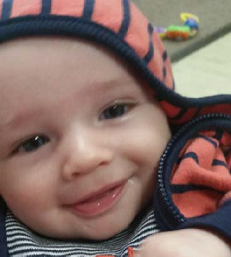
Carter
Diane gave Theresa her medal blessed by St. John Paul II, on May 30, with the following instructions: “I am lending you this blessed medal of Our Lady of Medjugorje, and you are to return it to me at the Baptism of your baby next year.”
Diane said, “These words were Spirit-driven – they were not the words I had in mind. All I wanted to do was to give her something to just make her feel a little better and give her a little hope.”
Diane was so excited a few months later when she told me that Our Lady and St. John Paul II had interceded and Theresa had conceived naturally! Diane related, “The doctor told her this is a high-risk pregnancy and they would do everything possible to get her to at least 24 weeks gestation. Then the baby would have a chance of survival.” She later added, “When 24 weeks came, they gave her steroid injections to help the baby’s lungs develop. The baby was doing well and so was Theresa. 28 weeks came and the doctor said, ‘Any day now.’ Theresa and the baby were showing some signs of early stress. 32 weeks came and the pregnancy continued. Because of losing the triplets less than a year ago, the doctor was sure Theresa wouldn’t be able to carry this baby longer than 36 weeks. But she did! At 39 weeks gestation, the doctor told her he would induce labor on his scheduled day for deliveries.”
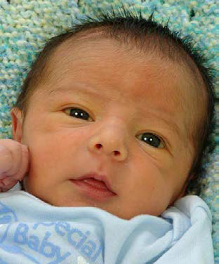
Joseph
Carter was born on March 25, 2015. Diane was ecstatic that he was born on the feast of the Annunciation. She exclaimed, “This was confirmation from Mary that Carter is a gift from the Lord by Her intercession and that of St. John Paul II, who had a great devotion to the Blessed Mother and interceded many times on behalf of couples who were not able to conceive and have children on their own.”
Another member of our mailing crew, Kathy, gave her special medal to her daughter, Ashley. In January of 2014, Ashley had had an ectopic pregnancy. Ashley wrote, “After having the ectopic, we had to postpone attempting pregnancy for a while, in order to heal and have testing done. We were then devastated to find that I had lost a tube, due to damage from the ectopic. The doctors scheduled surgery, but gave me one more month to try.”
Around the same time that Kathy gave Ashley the medal, one of Ashley’s friends, who had just returned from Medjugorje, gave her a prayer cloth that she brought back. Ashley slept with the prayer cloth on her lower belly/ pelvis area. Ashley said, “I used the medal and cloth, then found out I was pregnant the week before I was scheduled for surgery!” Joseph Daniel was born during the Easter Octave, on April 7, 2015. “We feel so blessed,” Ashley beamed.
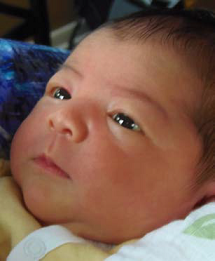
Maggie
In the meantime, I had been in touch with my cousin, Mary Jo, whose daughter-in-law had had multiple miscarriages since their first child was born seven years ago. Jenn and her husband, Chris, longed to have a second child. Whenever Jenn would get pregnant, Mary Jo would call me for prayers. But, it didn’t seem long before Mary Jo would be telling me that Jenn had miscarried again.
In August of 2014, my aunt, who is Mary Jo’s mother, told me that Chris and Jenn had decided to adopt. I wrote to Mary Jo and told her that was wonderful that they had decided to adopt, but I also shared that I had just read in the book, Saint John Paul the Great – His Five Loves by Jason Evert, that “one of the most common themes of the letters [regarding the intercession of St. John Paul II] is thanksgiving from couples who were previously unable to have children.” I offered her the last available medal I had, to give to Jenn.
About a month or so later, Mary Jo called me to say that Jenn was pregnant again. Mary Jo called me a couple of months later and told me that Jenn had made it through the risky time when she usually lost the babies, and wore the medal to her first sonogram. Mary Jo kept me updated as the pregnancy advanced.
Jenn was scheduled for a C-section on June 3, but God had other plans. Margaret (called Maggie) was born on May 31, 2015, the feast of the Most Holy Trinity. But, May 31 is a Marian feast when it does not fall on a Sunday – the feast of the Visitation – when Mary went to visit her cousin who had had trouble conceiving! What an awesome day to be born!
“Today I call you to place more blessed objects in your homes and that everyone put some blessed objects on their person” (Our Lady, July 18, 1985).
We thank Our Lady of Medjugorje and St. John Paul II for their intercession for these three beautiful babies.
Five Reasons the Pope’s Visit Helps the Pro-Life Cause
Posted By Father Frank Pavone on Sep 30, 2015
Pope Francis has completed his visit to the United States. He came as a pastor for the whole church and a prophet for the whole world, and therefore his message and his ministry are far reaching, embracing a wide variety of needs and issues confronting the human family. Here I want to comment on the impact of his visit on one of those needs and issues which is at the foundation of all the rest.
How did the Pope’s visit help this greatest human rights cause of all time?
1. The Pope encouraged families, which are the sanctuaries of life.
The original purpose and reason for the Holy Father’s visit was to be part of the World Meeting of Families, an event sponsored by the Vatican’s Pontifical Council for the Family every three years. Having worked for the Pontifical Council for the Family, I helped to organize the Second World Meeting of Families in Rio back in 1997. The vision for these meetings, initiated by Pope Saint John Paul II, embraces and extols the interrelated themes of family and life. The family, by definition, is “the sanctuary of life.”
This was reflected in the theme of this year’s World Meeting of Families: Love is our Mission: The Family Fully Alive. As the Pro-life Symposium which Priests for Life sponsored as part of the World Meeting emphasized, the family cannot be fully alive unless all its members are protected.
The affirmation of life, therefore, is integral to understanding the very reason the Pope came.
One of many babies kissed by Pope Francis on his trip to the United States.
One of many babies kissed by Pope Francis on his trip to the United States.
2. The Pope’s words announced the foundation of the pro-life message.
When Pope Francis speaks about the pro-life cause and the issue of abortion, he does so in a way that emphasizes how it is integrally connected with every other issue of human rights. He speaks to the foundation, both of human rights and of the Faith, so that nobody can come away with the impression that the church’s opposition to abortion is simply a temporary, changeable, or accidental appendage to her life, teachings, and mission.
Consider his words at the White House that we must build a society that is that is “truly tolerant and inclusive to safeguarding the rights of individuals and communities, and to reject every form of injustice and discrimination.” A nation that holds the “the word person…does not include the unborn” (Roe vs. Wade) has ceased to be tolerant and inclusive and has embraced instead a deadly form of injustice and discrimination against its youngest children.
Again at the United Nations, the Pope warned against “a relentless process of exclusion.”
150926-pope-philadelphia-child-mn-1115_db03287935dba90190790162ee9607ed.nbcnews-fp-1200-800
Pope Francis kisses Michael Keating.
3. The Pope again displayed the spirituality of being with the vulnerable.
Pope Francis showed once again his desire to be with those who are disadvantaged in various ways, as he went out of his way to embrace the disabled boy at the airport, and visited an inner city school and a correctional facility. This conveys a spirituality and approach that strengthens the pro-life cause, which maintains that abortion is not an abstract issue, but involves real people who suffer physically, and with whom we are called to be present in their need. Our presence at abortion facilities, where these children are carried to their death, is an expression of this very same spirituality.
4. The Pope told the bishops not to be silent.
Few concerns within the pro-life cause are expressed more frequently than the need for leadership among the clergy. To the U.S. bishops gathered in Saint Matthew’s Cathedral, the Pope listed, again, a wide range of victims, including “the innocent victim of abortion,” and declared, “It is wrong, then, to look the other way or to remain silent.”
5. The Pope rejected the narrow territorialism that so often interferes with pro-life work in the Church.
In his final homily in Philadelphia, the Pope said,
Kristin Keating cries as Pope Francis blesses her son, Michael Keating, who has Cerebral palsy, upon the pontiff’s arrival at Philadelphia International Airport.
Kristin Keating, mother of Michael Keating, her son with cerebral palsy.
“Joshua tells Moses that two members of the people are prophesying, speaking God’s word, without a mandate. In the Gospel, John tells Jesus that the disciples had stopped someone from casting out evil spirits in the name of Jesus. Here is the surprise: Moses and Jesus both rebuke those closest to them for being so narrow! . . . The temptation to be scandalized by the freedom of God, who sends rain on the righteous and the unrighteous alike (Mt 5:45), bypassing bureaucracy, officialdom and inner circles, threatens the authenticity of faith. Hence it must be vigorously rejected . . . Jesus says, “Do not hold back anything that is good, instead help it to grow!” To raise doubts about the working of the Spirit, to give the impression that it cannot take place in those who are not “part of our group,” who are not “like us,” is a dangerous temptation. Not only does it block conversion to the faith; it is a perversion of faith!”
So many initiatives in the pro-life cause are stifled due to precisely this narrowness, to turf wars, and to the temptation within the institutional Church to think we are self-sufficient and do not need “outside groups.”
May the example, teaching, and spirit of Pope Francis continue to bless America and the pro-life cause!
Jesus says, “Do not hold back anything that is good, instead help it to grow!”
‘Family is factory of hope’ agrees mom of 5
http://chnonline.org/news
Editor’s note: Gina and Joseph Loehr were part of a panel presentation, “How Precious is the Family: Advice from Pope Francis on How to Love,” at the World Meeting of Families in Philadelphia on Sept. 25.
“It was like Catholic Disneyland.”
That’s how my friend, Rachel Bond, described the exhibitor plaza at the World Meeting of Families which she attended with her husband and two young daughters.
Nearly 500 Catholic organizations, ministries, companies and communities set up booths at the Philadelphia Convention Center. Some 20,000 attendees visited these vendors between the densely packed schedule of Masses, keynote addresses and breakout sessions – close to 100 talks in the course of four days.
It was a whirlwind week of Catholic formation and celebration that culminated in the visit of Pope Francis to the Festival of Families Saturday night.
My husband, Joe, and I missed out on most of this. With a delayed flight that didn’t get in until Thursday night, our panel presentation during the final Congress session on Friday morning, and our flight home Saturday afternoon, we were only able to attend one talk.
We didn’t even get to step into the exhibitor plaza, which the Secret Service suddenly shut down just before we arrived, nearly 24 hours ahead of schedule.
We did get our World Meeting of Families “pilgrim packs,” complete with program booklet, hat, poncho, water bottle and a ton of advertisements and brochures. We also went through a lot of security measures as we moved among hotel, meeting spaces and the city center.
We even got to catch a glimpse of the Holy Father from about 30 yards away when he arrived at the Basilica of Saints Peter and Paul on Saturday morning. However, we missed the chance to participate in most of the week’s events.
But that didn’t seem to matter.
Just being there amid thousands of Catholic pilgrims, just experiencing the jubilant and faith-filled atmosphere, just witnessing the coming and going of so many families from so many places was worth as much as hearing any inspiring talk or participating in any special activity.
We were among friends – strangers, yes, but also friends. There was a spirit of fraternity and camaraderie among people that was like a little foretaste of heaven. Here we were together, the church universal, with all of our diversity beautifully melding into a true unity.
As the parents of five young children, Joe and I sometimes feel a bit countercultural. When I’m out and about with the kids, people are forever making wry comments about how I have my “hands full.” (“Full hands, full heart,” I like to reply.)
But in this crowd, nobody was astonished or exasperated by the sight of multiple siblings being together. On the contrary, even though not all the families present were “big,” even though many attendees were priests or nuns or interested adults on their own, the love and appreciation everyone had for the gift of family life was tangible.
Simply put, it was encouraging to be in Philadelphia. It was refreshing to be in the company of tens of thousands of people who agree with Pope Francis’ comments Saturday night that “the family is a factory of hope,” and that children “are the future, the strength that moves us forward.”
Perhaps the best part of the trip was coming home. The time we spent in the presence of our global Catholic family helped me to appreciate our little domestic family
Here in our home, we have the privilege of living out the noble mission of Catholic family life.
“How precious is the family,” says Pope Francis.
Indeed, being part of a family is one of the greatest blessings that God the Father gives to us, his beloved children.
(Joseph and Gina Loehr, parents of five children, are members of Shepherd of the Hills Parish, Eden. Joseph is partner-owner of Loehr Dairy, LLC, a 700-acre dairy farm that has been in his family for 130 years and Gina is an instructor of theology at Marian University of Wisconsin. A freelance author and speaker on topics including marriage, women’s issues, and spirituality, she has also served as a delegate for the Pontifical Council for the Laity’s recent study seminar during which she met Pope Francis.)
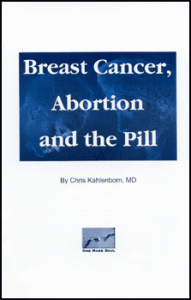
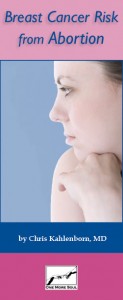

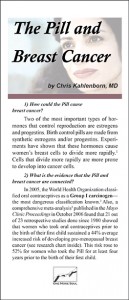
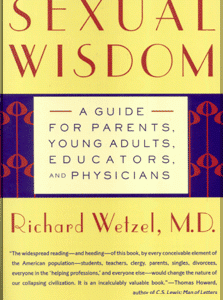
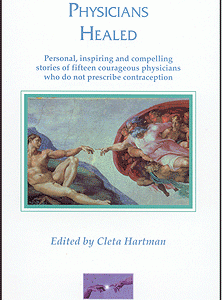
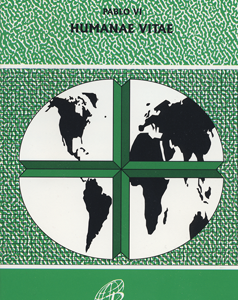
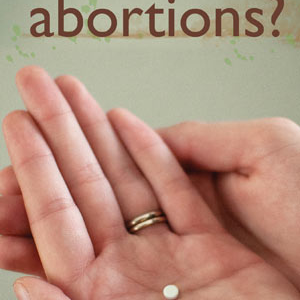
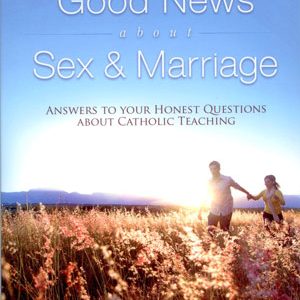
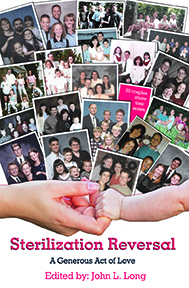
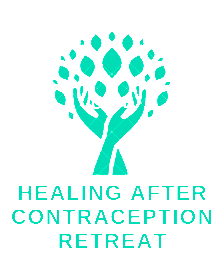
Life-Limiting Prenatal Diagnosis: Hard Cases Close to Home
Best Choices for Families Dealing with Adverse Fetal Diagnosis
Discovering one’s child has a serious medical condition is always devastating, whether it occurs at twenty years old or twenty weeks gestation. Among the many disorders that usually shorten a child’s lifespan dramatically, causing death within the first few months of life, are various Trisomy conditions, Potter’s Syndrome, and anencephaly (a neural tube disorder). Many families confronted with an adverse prenatal diagnosis have experienced a lack of resources, information, and support, and often face unwelcome pressures as well, but those who carry to term usually find peace nonetheless.
Dum Vivimus Vivamus
“Dum vivimus vivamus…While we live, let us live” is a fitting motto for families who give their babies a chance to survive, contrasting sharply with many historical and current medical prac-tices. What follows are four stories from a limited geographical region (western Ohio) representing hundreds of regions across the country; your own communities; your own hospitals.
The life of Joseph
Diagnosed with anencephaly at 20 weeks; lived 37 weeks in the womb and 88 minutes after birth.
The ultrasound doctor who diagnosed anencephaly gave Joseph’s parents one option: “we could induce early (like next week!) and then we wouldn’t have to go through the rest of the pregnancy…I thought to myself: If my firstborn, was diagnosed with a terminal illness and had only 4 months to live, would I ask the doctors to end her life right now, or would I love and cherish every moment until God called her home? Thinking of it that way, the answer was clear. It was obvious it wasn’t a choice at all. I was incredibly sad and discouraged having to be in this position, but the only possible choice we could live with is to just love this baby as long as we can.” After their initial office visit, they were fortunate to experience the support of family and friends, as well as that of their trusted family physician, who “grieved with us, prayed with us.”
The life of James Thomas
Son of Ben and Lynn, diagnosed with Potter’s Syn-drome at 22 weeks; lived 36 weeks in the womb and 90 minutes after birth.
James’ mom shared their experence, “At the initial appointment [22 week check up] when we discov-ered the Potter’s Syndrome, the first words from the doctor’s mouth were: ‘If you choose to terminate, you need to do so by the end of the week.’ ” James’ parents were “surprised, angry and hurt by this recommendation.” So much so that, at their request, the ethics board of the hospital has changed their guidelines for doctors, instructing them to present, in a compassionate manner, a full range of options to clients. James’ parents wondered, “Why was this the first option given to us?” The only risk factor for James’ mom was a previous history of pregnancy hypertension unrelated to Potter’s Syndrome. It was treatable and only a concern closer to term when James would be viable outside the womb.
Fortunately family and close friends were very supportive. Yet “lots of other people questioned the decision. No one could give any rationale for terminating, but the gist was ‘why would you want to continue with the pregnancy [considering it an inconvenience] when you know he is going to die anyway?’ ” The response of James’ parents was, “Why not? Why not give him the best chance at life that we could?”
The lives of Elizabeth and Jacob
Children of Scott and Julie, both diagnosed with Potter’s Syndrome at around 20 weeks gestation, with different outcomes.
Elizabeth and Jacob’s parents had a significantly different experience with their first child diagnosed with Potter’s syndrome than with their second. Elizabeth and Jacob’s stories are a poignant illustra-tion of the contrast between two different decisions. With Elizabeth, their first child with Potter’s, they followed advice from doctors and other counselors, undergoing “early induction” at 23 weeks. Doctors had avoided the word “termination” so they didn’t realize the implications—until later—nor the deep regret that came with “early induction” of an essen-tially non-viable baby. Nor would they have chosen that route had they been better informed. When Jacob came along, diagnosed with the same condi-tion, they knew they didn’t have to “induce early.” This time, “we were more at peace because we had given him every chance to live.” Monitoring vital signs closely, they carried Jacob as close to term as possible, birthing him at 37 weeks after discovering he passed away in the womb. Their only living child was almost 3 as they said their goodbyes to Jacob at the birth. With both Elizabeth and Jacob, pictures from the day of birth are precious memories, even though the children had not survived. A deeper regret lingers, however, with regard to the short time leading up to Elizabeth’s last day of life: “We feel like we weren’t given time with Elizabeth like we were with Jacob between diagnosis and birth. With Elizabeth we had a week and a half to make a decision and prepare. That wasn’t enough time and made everything harder after.” They had hoped for a live birth with both children, even if the time with them alive would be limited. In both cases it was not as they had hoped, but with Jacob they were grateful for those extra 14 weeks they had with him alive in the womb. “Doctors are afraid of giving false hope,” they added, “but parents need hope. The hopes are not naive; they give parents the opportunity to try to do something to help their child.”
Safeguarding Women’s Health and Applying Moral Principles
The short lives of the children introduced in this brochure deeply touched their families, calling them to love. All of these families experienced many blessings from choosing to carry their babies to term. They were fortunate to have access to information beyond the limited options given at the hospital, and to have ample support for their decisions from friends and family. These life-lim-iting prenatal conditions primarily affect the babies, not posing serious risk to the mother.
The hypertension that doctors feared for James’ mom didn’t result from Potter’s Syndrome; she also developed it during other pregnancies. Joseph’s mom had concerns about polyhydramnios (swelling from excess amniotic fluid) but the primary concern with that (besides discomfort) is early labor or stillbirth, which again concerns the baby, not the mom. Elizabeth and Jacob’s mom did not experience complications, but was told infection could follow if the baby died in the womb. All of these complications are manageable; none are life threatening or permanently damaging to the mother. In cases such as these, some try to use the princi-ple of double effect to justify actions that end the baby’s life. But double effect can only be invoked when the primary intended effect is not morally wrong. The intended effect of “early induction” (or “termination”) is to shorten the pregnancy by birthing a non-viable child. It may be a well-mean-ing attempt to minimize the parents’ grief, but it actually does nothing to take away the pain of infant loss. Early induction does directly result in the baby dying earlier rather than later and this is the primary intended effect of the procedure, not merely an unfortunate secondary result.1 In this case, “early induction” is not the only conceivable means of relieving grief, and is mostly ineffective. In fact, there is ample evidence that abortion often causes additional emotional complications, both from the grief of loss and from disrupted hormonal balance.2 The drastic hormonal shifts have also been shown to cause dramatically increased risk for disease, notably breast cancer.3 In addition, there is evidence that termination of pregnancy (abortion) can have a traumatic effect on those involved, including medical personnel who participate or witness the event.4 In any case, what if the diagnosis was wrong, which has been known to happen?
Why Couldn’t We…?
It’s natural for parents to ask if there is anything they can do to help their child survive as long as possible. With anencephaly and Potter’s Syndrome, possibilities are extremely limited because vital organs are severely affected. Unfortunately, possibil-ities are further limited by the hopeless practice of early induction. Since Potter’s Syndrome involves inadequate amniotic fluid, most parents ask the obvious question: “Can’t we try to inject synthetic amniotic fluid into the womb as needed?” Parents are told, “No.” Yet in 2013, a US Congresswoman, Jamie Herrera Beutler, and her husband wouldn’t take no for an answer. They found a team of doctors willing to try the injections. Their daughter Abigail became the first known survivor of Potter’s Syndrome, receiving a standing ovation on the House floor a year after her birth. Abigail’s dad, Daniel, said in a Today Show interview, “There are no guaranteed solutions…for [Potter’s Syndrome], but don’t be satisfied with one opinion because there are a lot of intelligent doctors with different perspectives and experiences and opinions, so work to find one who will partner with you to find anything possible.”5
Citations
1. Principle of Double Effect, download at Catholics United for the Faith: www.cuf.org/FileDownloads/doubleeffect.pdf
2. Afterabortion.org lists physiological effects of abortion.
3. The Breast Cancer Prevention Inst. (bcpinstitute.org) presents the physiological explanation and statistical correlation of abortion to breast cancer.
4. Many former abortion providers share their stories at ProLifeAction.org/providers and ATTWN.org (And Then There Were None.)
5. Steven Ertelt, “Congresswoman’s Miracle Baby Still Doing Well After Doctors Said She’d Die,” LifeNews.com, September 6, 2013.
Text by Anne Schmiesing Right to Life—Shelby County, OH
This brochure is not intended as a resource for medical information about the conditions mentioned. Note that although Down Syndrome is included in the list (as Trisomy 21), children with Down Syndrome have a much higher chance of survival than children with the other conditions named in this brochure. The life expectancy for all of these prenatal conditions increases with advances in medical knowledge and technology.
Information for stories was collected from personal interviews and with permission from a blog about Joseph. More information from the interviews is available at ShelbyCountyRTL.org. For additional stories and resources, see PrenatalPartnersForLife.org and SufficientGraceMinistries.org.
The book, I Will Carry You by Angie Smith chronicles the creative ways one family found to spend time with their child in her short life. This is a helpful resource for families faced with a life-limiting prenatal diagnosis.
Benjamin Hartings, father of James Thomas, has written a book about his experience. Return to the Altar: A Sacred Journey through Grief and Joy is the story of a family’s loss, a death of a son, and how it transformed their view of the world. What brought the family back to the Altar was not an experience that was expected, but one that was accepted as God’s plan.
Posted in News & Commentary, Uncategorized | No Comments »